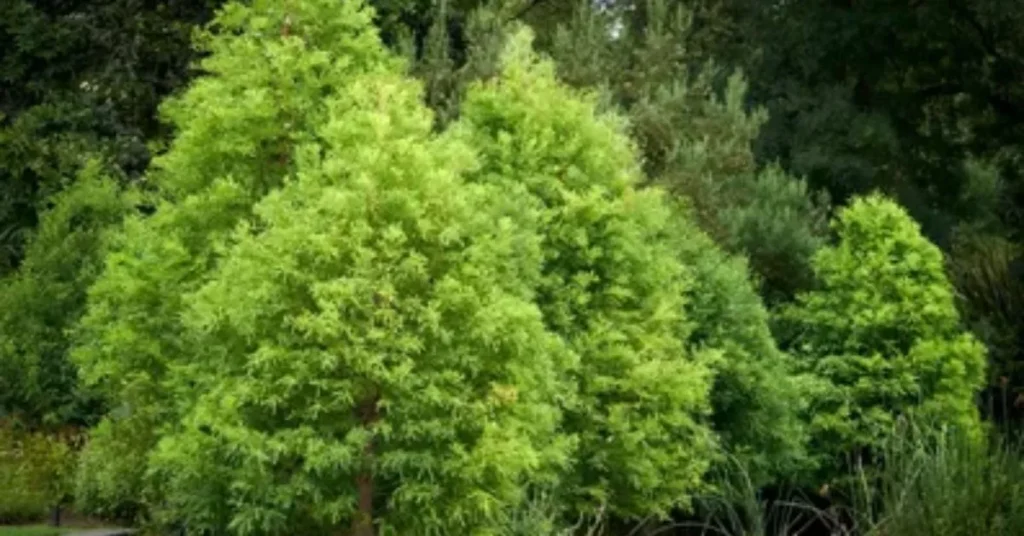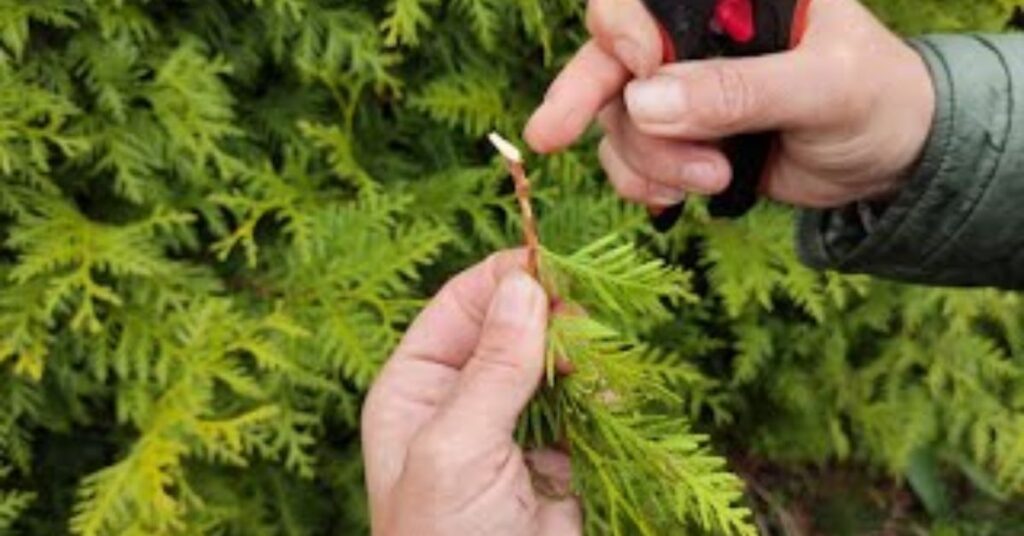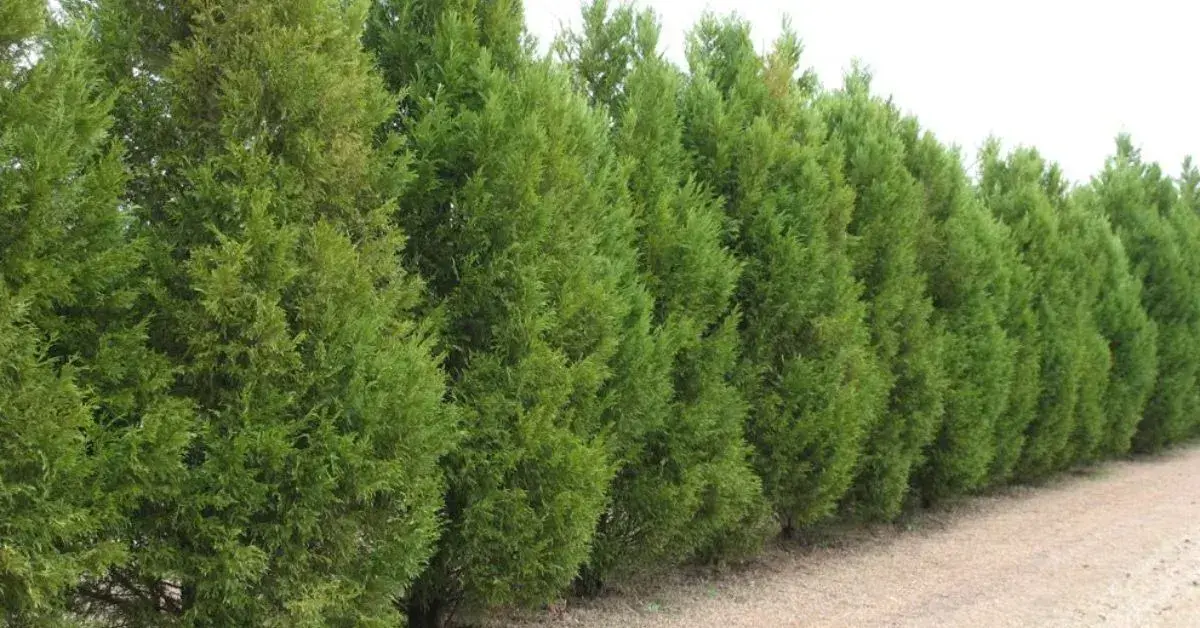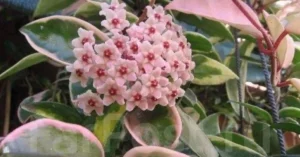Ever seen those stately Cypress Trees with soft feathery leaves going rusty-orange in autumn. That’s the bald cypress—a beautiful native that’ll give your landscape a stunning makeover with hardly any effort on your part.
These incredible Cypress Trees flourish where others would perish occurring naturally in wetland environments but surprisingly flourishing in normal garden conditions as well. Don’t be intimidated by their height in the wild; with the right care, you’ll develop a manageable yet stunning centerpiece for your yard.
Getting your bald Cypress Tree off to a strong start isn’t rocket science. They’ll thank you for a sunny spot, consistent moisture during establishment, and the occasional feeding. What makes them truly special. Their legendary longevity—plant one today, and your great-grandchildren might sit beneath its branches a century from now. Ready to welcome this low-maintenance giant to your garden.
Choosing the Right Location
Bald cypress trees are easy to fit into nearly any location in your yard, so they’re ideal for beginners and pros alike. They adore full sun where they’ll form their signature cone shape and deep green foliage. You can plant them in wet areas where other trees will fail—they thrive there.
These all-purpose giants adapt to a range of soil conditions from clay to sand, acidic to alkaline. Though they thrive close to water, they’ll do well in regular yard conditions as well. Just make sure to leave enough space for them to grow to their regal height of 50-70 feet at maturity. Their root system is surprisingly compact, so you won’t have to worry about destroying surrounding structures.
Planting Your Bald Cypress Tree

Dig a hole twice as wide as the root ball but only as deep as the container height. This gives roots room to spread while preventing the tree from sinking too deep. Remove the tree from its container and gently loosen the outer roots before placing it in the center of the hole.
Backfill with your original soil mixed with a bit of compost for nutrients. Create a slight basin around the trunk to hold water during initial watering sessions. Apply 2-3 inches of mulch around the base, leaving a few inches clear near the trunk to prevent rot and disease. Stake your young cypress during its first year if you live in a windy area.
Related : Cypress Tree
Watering Needs
New bald cypress tree need regular moisture in their first two growing seasons. Water the root area thoroughly once a week in dry weather and let the top inch of soil dry out between waterings. Bald cypress plants like to grow in wet settings but turn out to be surprisingly drought-resistant once established.
After the second year, you can significantly reduce watering unless facing extreme drought. Their self-sufficient nature means they’ll tap into groundwater and handle occasional flooding without complaint. During extended dry spells, give your mature cypress a deep soaking every two weeks. Despite their water-loving reputation, overwatering established trees in poorly draining soil can cause more harm than good.
MORE READ : How To Grow And Care For Drift Roses
Fertilizing Your Bald Cypress Tree
- Young trees benefit from light fertilization in spring using a balanced, slow-release formula.
- Apply fertilizer from the dripline inward, never directly against the trunk.
- Established cypress trees rarely need supplemental fertilization in average soil.
- Over-fertilizing causes excessive, weak growth susceptible to wind damage.
- Signs of nutrient deficiency include yellowing needles outside of normal fall coloration.
- Use organic compost as a gentler alternative to chemical fertilizers when needed.
- Trees planted in poor soil benefit from annual feeding during the first five years.
- Apply fertilizer after spring growth begins but before summer heat intensifies.
- Soil tests provide the most accurate guidance for nutrient supplementation.
- Mature trees growing in lawns often receive sufficient nutrients from regular lawn fertilization.
Pruning for Health and Shape

- Bald cypress trees naturally develop their classic pyramidal shape without much intervention.
- Remove crossing or rubbing branches that create wounds and entry points for disease.
- Prune in late winter while the tree remains dormant for minimal stress.
- Limit trimming to no more than 25% of living branches in a single season.
- Lower branches can be removed gradually to raise the canopy as the tree matures.
- Use clean, sharp tools to make smooth cuts that heal quickly.
- Never top a cypress tree as this destroys its natural form and weakens its structure.
- Young trees benefit from light pruning to establish a strong central leader.
- Remove dead or damaged branches any time they appear.
- Avoid heavy pruning during growth flushes or drought periods when trees experience more stress.
Pest and Disease Management
| Pests | Diseases |
| Bagworms: Hang like small pinecones and consume foliage. Remove by hand or treat with Bt spray for severe cases. | Needle Blight: Appears as brown spots on needles during wet weather. Improve air circulation by thinning branches. |
| Spider Mites: Tiny pests that cause stippling on needles. Blast with strong water spray or use insecticidal soap during dry periods. | Root Rot: Occurs in poorly drained soils. Prevent by ensuring proper drainage before planting. |
| Cypress Leaf Beetles: Create skeletonized feeding patterns on foliage. Rarely requires treatment in healthy trees. | Twig Blight: Causes branch tips to die back. Prune affected areas with sterilized tools. |
| Scale Insects: Appear as bumps on branches. Treat with horticultural oil during dormant season. | Canker: Creates sunken areas of dead tissue on branches. Remove infected limbs well below canker site. |
| Caterpillars: Occasional defoliators that rarely cause lasting damage. Hand-pick or use Bt products for control. | Heart Rot: Internal trunk decay, often enters through wounds. Prevent by avoiding trunk injuries. |
Dealing with Common Problems
- Cypress trees resist most serious diseases, making them refreshingly low-maintenance additions to your landscape.
- Watch for bagworms hanging from branches like small pinecones – remove them by hand or use Bt spray for larger infestations.
- Occasional spider mites might appear during hot, dry spells – a strong blast of water typically eliminates these pests.
- Yellow needles in fall represent normal seasonal changes, not cause for concern.
- Needle blight presents as brown spots on needles during wet seasons – improve air circulation by thinning branches if it appears.
- Cypress leaf beetles sometimes feed on foliage but rarely cause lasting damage to established trees.
- Excess “knees” popping up in lawns can be mowed over without harming the tree’s overall health.
- Root rot only becomes problematic in perpetually soggy soil with poor drainage.
- Sunscald affects young trees with thin bark – wrap trunks during winter months in cold regions.
- Stress symptoms include premature needle drop – address by evaluating soil moisture and sunlight exposure.
Long-Term Care
- Bald cypress trees grow relatively quickly, adding 1-2 feet per year during their youth.
- They develop magnificent flared trunks naturally without human intervention.
- Monitor soil moisture during extended droughts even in mature specimens.
- Expect normal needle drop each autumn as part of their deciduous nature.
- Their adaptability means minimal long-term maintenance compared to fussier species.
- Apply fresh mulch annually to retain moisture and suppress competing weeds.
- Inspect for deadwood after storms and remove any damaged branches promptly.
- These trees live for centuries when properly sited and minimally disturbed.
- “Knees” typically develop in consistently wet soil but cause no harm to the tree.
- Expect more dramatic fall color changes in trees receiving full sun exposure.
Frequently Asked Questions
How fast do bald cypress trees grow?
They add 1-2 feet yearly when young, reaching 40-50 feet in about 25 years.
Will my bald cypress always develop knees?
No. Knees mainly form in wet soils. Trees in average yards often develop few or none.
Can I plant a bald cypress in a small yard?
Yes. Despite their eventual size, their slow growth and contained root system work well in moderately sized yards.
Do bald cypress trees attract wildlife?
Yes. They provide seeds for animals, nesting sites for birds, and habitat for beneficial insects.
How long do bald cypress trees live?
In landscapes, typically 100-200 years. Wild specimens can live 600+ years, with some reaching 1,000+.
Conclusion
Bald cypress trees stand out as remarkable landscape additions that combine stunning visual appeal with unmatched resilience. Their feathery foliage transforms from vibrant green to rusty copper each year, creating seasonal drama few other trees can match. Even better, they shrug off most common tree problems that plague fussier species, making them perfect for both novice and experienced gardeners.
Your cypress will require little maintenance once planted, requesting only good drainage, sufficient sunlight, and periodic watering in extreme drought. These living fossils have endured millions of years by being able to adapt to shifting conditions—a characteristic that benefits them in today’s landscapes with climate uncertainties. Their distinctive “knees” and flared trunks provide architectural appeal even in winter when branches are bare.




